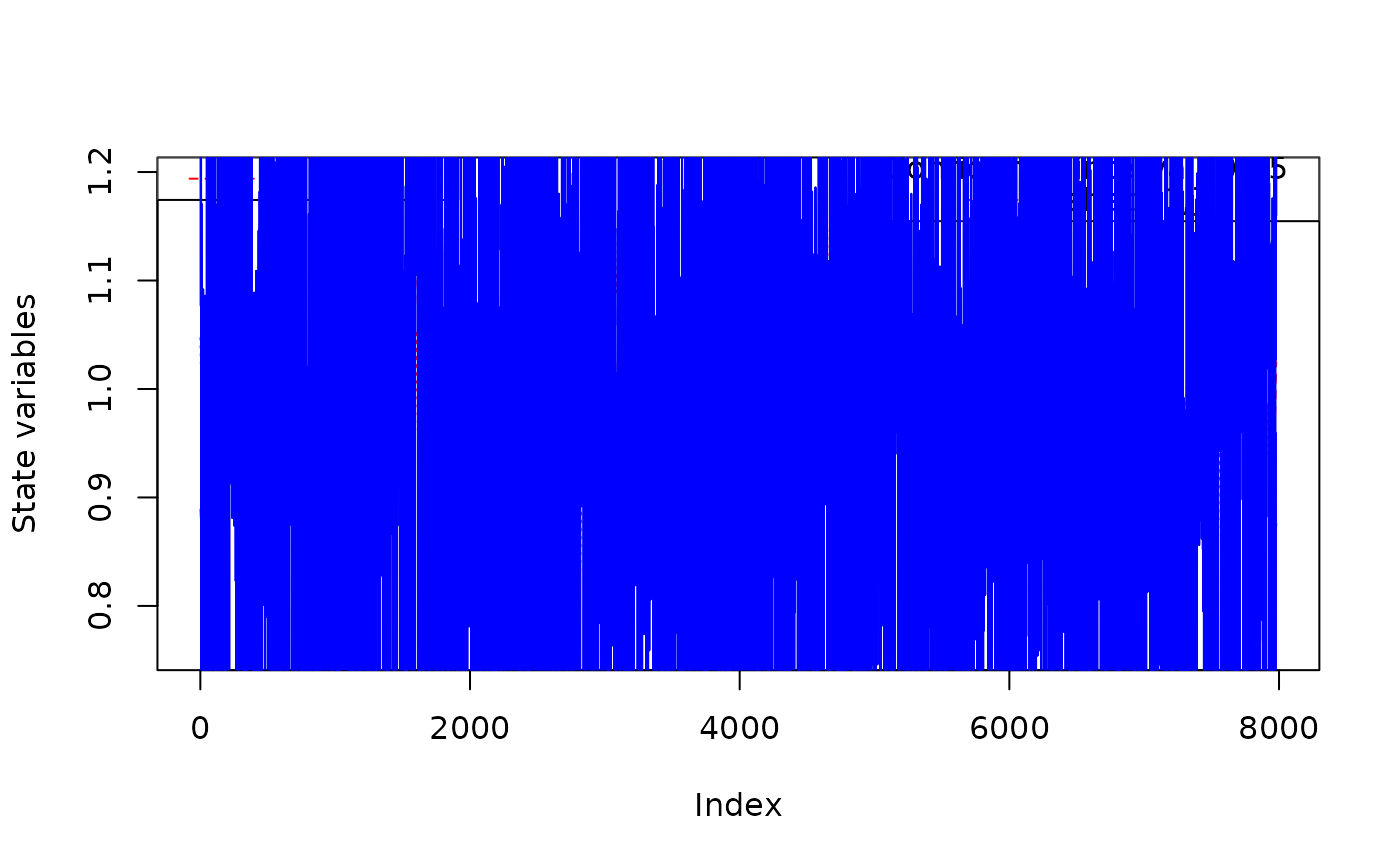Plotting method for objects of class fks. This function
provides tools visualisation of the state vector of the Kalman smoother output
Arguments
- x
The output of
fks.- CI
The confidence interval in case
type == "state". SetCItoNAif no confidence interval shall be plotted.- ahatt.idx
An vector giving the indexes of the predicted state variables which shall be plotted if
type == "state".- ...
Details
The state variables are plotted. By the argument ahatt.idx, the user can specify
which of the smoothed (\(a_{t|n}\)) state variables will be drawn.
See also
Examples
## <--------------------------------------------------------------------------->
## Example 3: Local level model for the treering data
## <--------------------------------------------------------------------------->
## Transition equation:
## alpha[t+1] = alpha[t] + eta[t], eta[t] ~ N(0, HHt)
## Measurement equation:
## y[t] = alpha[t] + eps[t], eps[t] ~ N(0, GGt)
y <- treering
y[c(3, 10)] <- NA # NA values can be handled
## Set constant parameters:
dt <- ct <- matrix(0)
Zt <- Tt <- array(1,c(1,1,1))
a0 <- y[1] # Estimation of the first width
P0 <- matrix(100) # Variance of 'a0'
## Estimate parameters:
fit.fkf <- optim(c(HHt = var(y, na.rm = TRUE) * .5,
GGt = var(y, na.rm = TRUE) * .5),
fn = function(par, ...)
-fkf(HHt = array(par[1],c(1,1,1)), GGt = array(par[2],c(1,1,1)), ...)$logLik,
yt = rbind(y), a0 = a0, P0 = P0, dt = dt, ct = ct,
Zt = Zt, Tt = Tt)
## Filter tree ring data with estimated parameters:
fkf.obj <- fkf(a0, P0, dt, ct, Tt, Zt, HHt = array(fit.fkf$par[1],c(1,1,1)),
GGt = array(fit.fkf$par[2],c(1,1,1)), yt = rbind(y))
fks.obj <- fks(fkf.obj)
plot(fks.obj)
 ##lines(as.numeric(y),col="blue")
##lines(as.numeric(y),col="blue")